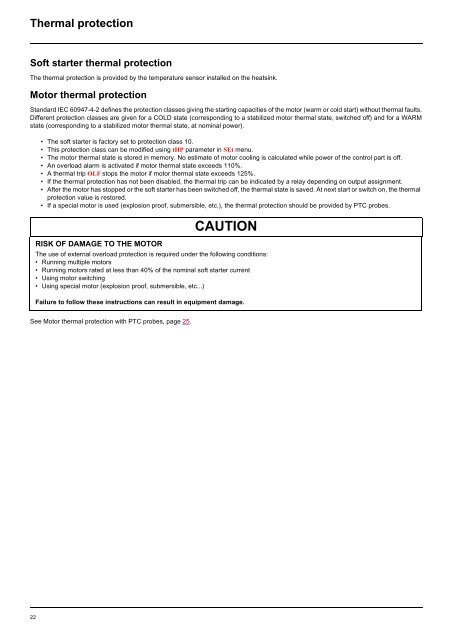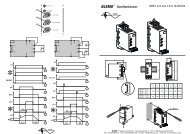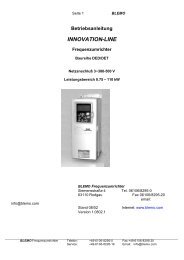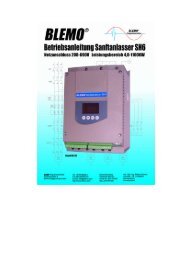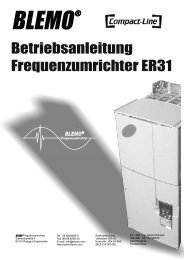You also want an ePaper? Increase the reach of your titles
YUMPU automatically turns print PDFs into web optimized ePapers that Google loves.
Thermal protection<br />
Soft starter thermal protection<br />
The thermal protection is provided by the temperature sensor installed on the heatsink.<br />
Motor thermal protection<br />
Standard IEC 60947-4-2 defines the protection classes giving the starting capacities of the motor (warm or cold start) without thermal faults.<br />
Different protection classes are given for a COLD state (corresponding to a stabilized motor thermal state, switched off) and for a WARM<br />
state (corresponding to a stabilized motor thermal state, at nominal power).<br />
22<br />
• The soft starter is factory set to protection class 10.<br />
• This protection class can be modified using tHP parameter in SEt menu.<br />
• The motor thermal state is stored in memory. No estimate of motor cooling is calculated while power of the control part is off.<br />
• An overload alarm is activated if motor thermal state exceeds 110%.<br />
• A thermal trip OLF stops the motor if motor thermal state exceeds 125%.<br />
• If the thermal protection has not been disabled, the thermal trip can be indicated by a relay depending on output assignment.<br />
• After the motor has stopped or the soft starter has been switched off, the thermal state is saved. At next start or switch on, the thermal<br />
protection value is restored.<br />
• If a special motor is used (explosion proof, submersible, etc.), the thermal protection should be provided by PTC probes.<br />
RISK OF DAMAGE TO THE MOTOR<br />
See Motor thermal protection with PTC probes, page 25.<br />
CAUTION<br />
The use of external overload protection is required under the following conditions:<br />
• Running multiple motors<br />
• Running motors rated at less than 40% of the nominal soft starter current<br />
• Using motor switching<br />
• Using special motor (explosion proof, submersible, etc...)<br />
Failure to follow these instructions can result in equipment damage.


